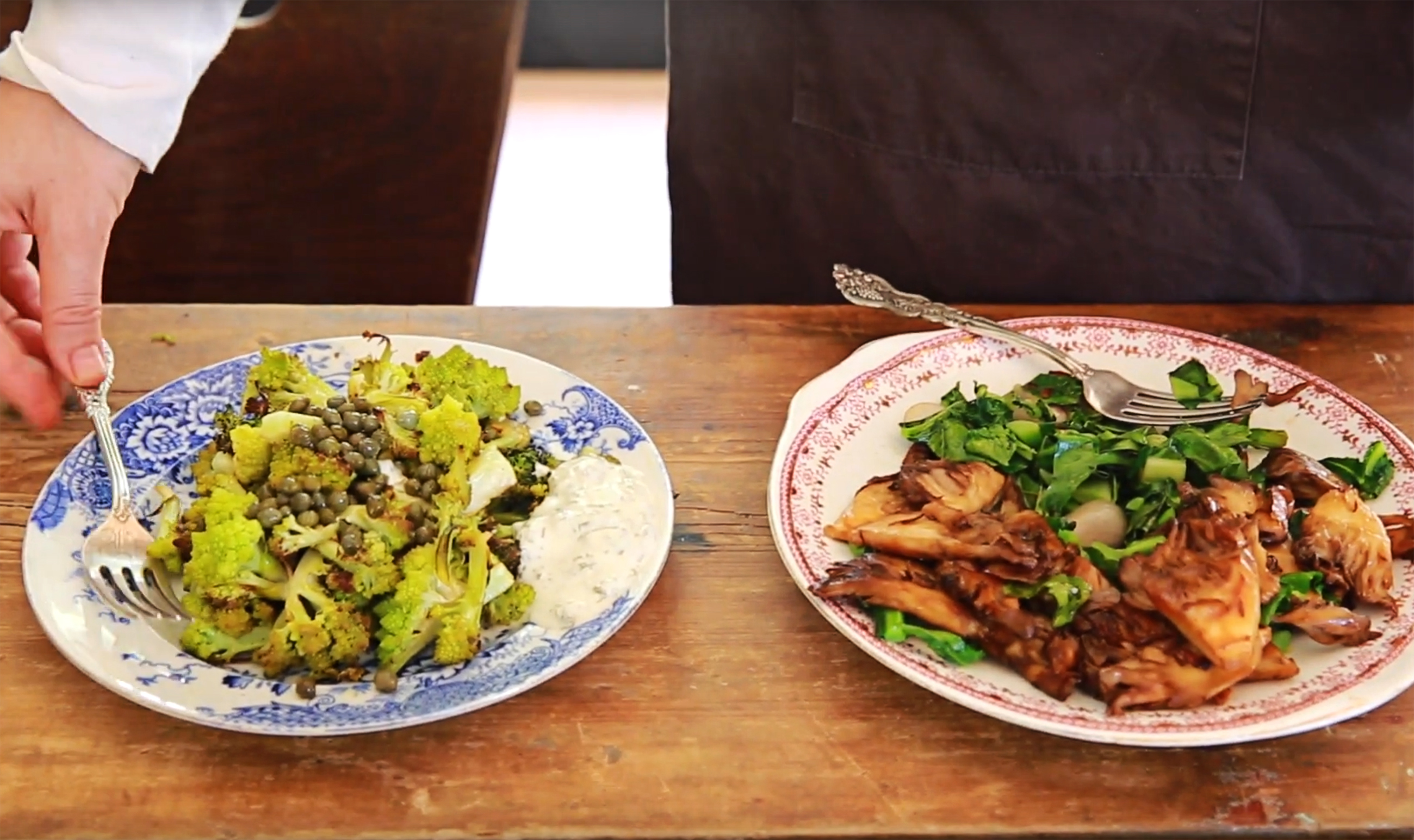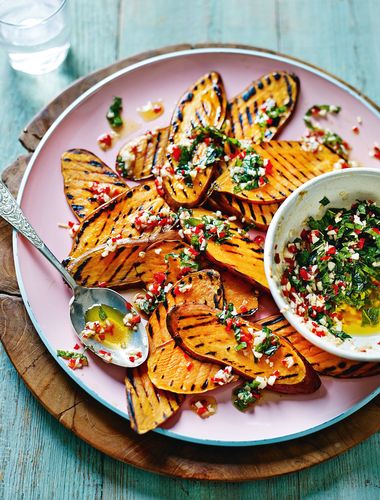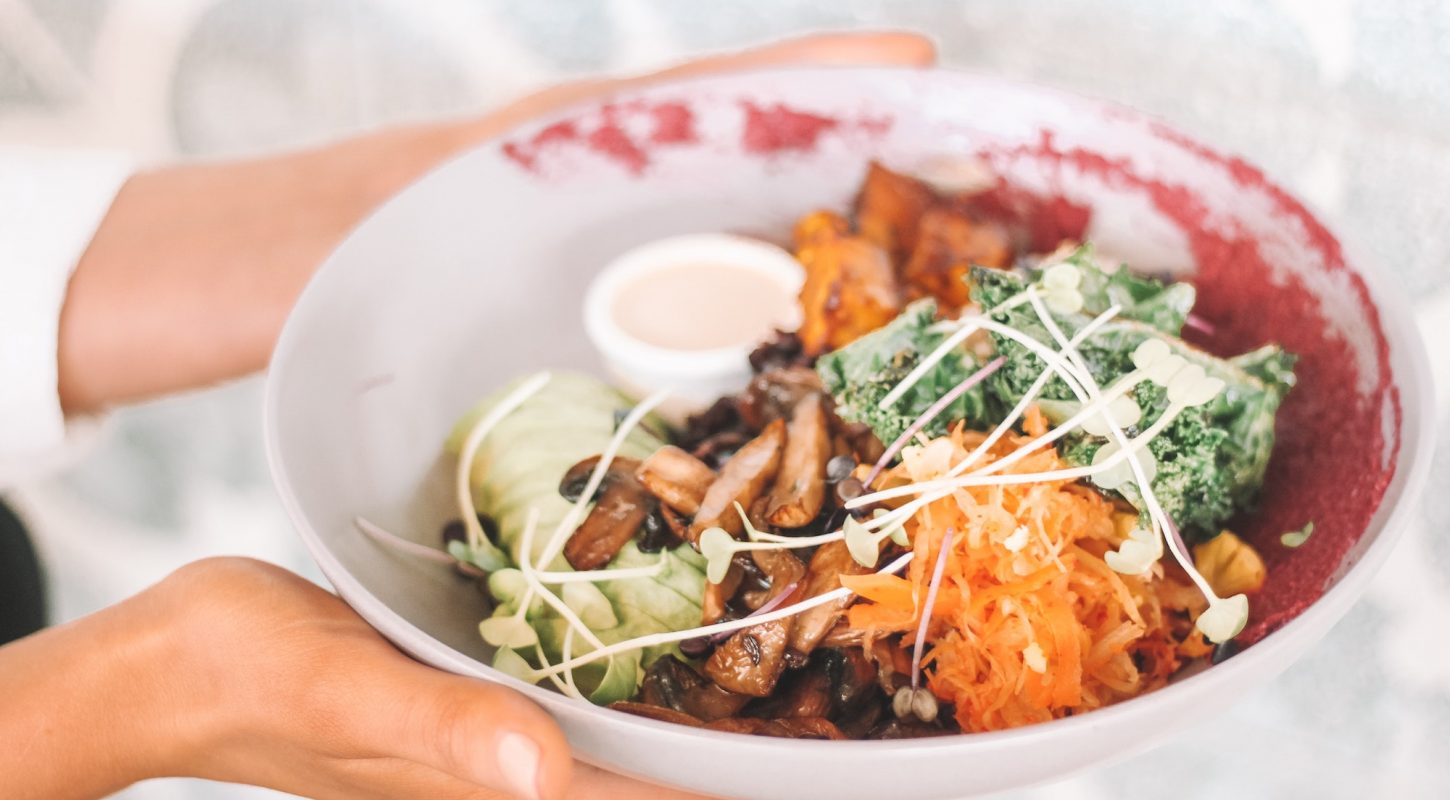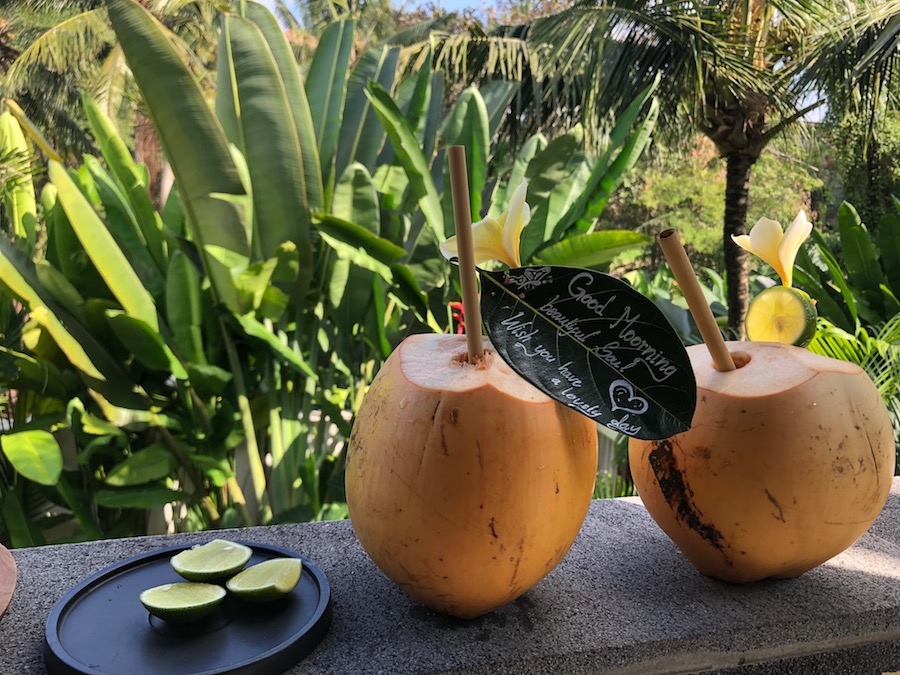Today, I wanted to share a piece with you written by Sharon Palmer, a registered dietician, editor of the award-winning health newsletter Environmental Nutrition, and nationally recognized nutrition expert. Sharon is another champion of promoting a plant-based lifestyle and, in this piece, she shares the benefits of eating a diverse array of plant-based recipes from around the world
Many cultures throughout the world expertly execute plant-based meals that star protein-rich ingredients like legumes, grains, and nuts that are packed with flavor thanks to the unique blends of spices and herbs found throughout the world.
At the bottom of Sharon’s article, I have also shared some of my favorite international dishes that can also be found in my book, The Kind Diet. I hope this piece inspires you to get adventurous in your plant-based kitchen (or at least order out from that Indian place you’ve been wanting to try!) and that these global cuisines can help satiate your wanderlust as well as your appetite.
Enjoy,
Alicia
—

A Trip Around The World With Plant-Based Global Cuisine for Health & Flavor
One of the best ways to embrace a healthful, delicious plant-based diet is to honor rich, global food traditions, which have been doing plant-powered food really well for centuries. Check out these tips for making your eating style more diverse and adventurous. Take a trip around the world with plant-based global cuisine for health and flavor.
You already probably know that adopting a more plant-based diet based on a variety of whole plant foods has numerous benefits for your mind, body, and soul—as well as the environment. All of those nutrients and phytochemicals flowing through your body lead to numerous health benefits associated with a plant-based diet. But you can take your plant-based diet a step further by honoring a big beautiful world of food traditions and flavors. By doing so, you’ll boost the flavor of your diet, as well as the nutritional profile.
The combination of culture, values, and lifestyle plays a major role in the choices you make, especially when it comes to your diet. In comparison to other “diets” that focus solely on losing weight and result in short-term commitment, engaging in a plant-based diet is a long-term dedication that translates into a lifestyle choice for many people — especially those who are focused on their health and environment. As you know, food connects people around the world, within communities, and amongst immediate friends and family, as it brings them together to celebrate a common interest—food.
The variety of foods that originate from diverse cultures plays a major role in the expansion of food choices for many, specifically those who engage in a plant-based diet, because of the numerous plant-powered options available. The incorporation of different spices, herbs, seeds, whole grains, pulses, vegetables, and fruits differentiates the dishes that are prepared in each and every culture around the globe. For instance, Indian, Thai, Mexican, Middle Eastern, and Vietnamese cuisines all offer a variety of delicious, unique meals highlighting key plant-based foods and culinary traditions that make these foods shine!
Check out these five reasons why plant-based global cuisine can infuse your diet with health and flavor rewards.
5 Reasons to Dive into Plant-Based Global Cuisine
1. Global Foodways Embrace Plants. Many cultures simply know how to do plant-based meals right! Rather than emphasizing animal foods high in saturated fat and cholesterol, these food cultures often focus on plant-based foods packed with vitamins, minerals, phytochemicals and fiber. This is because of traditional factors related to food supplies, religion, and customs. For example, Mexican dishes are known for their abundance of legumes, including pinto and black beans, the Mediterranean diet highlights unsaturated and heart-healthy plant-fats such as nuts and olive oil, and the traditional Japanese diet embraces whole soy foods such as edamame, tofu and miso.
2/ Cultural Food Traditions Shift the Plate. Our mainstream diets in America are slowly transitioning from the mentality of preparing meals with meat as “the center of the plate” to focusing on plant-based foods as the star of the plate. In fact, we have been influenced by other cultures that simply use meat as a flavoring rather than the main event. This eating style is the basis of many global dishes, such as curries, stir-fries, stews and pasta dishes that are flavored with a small portion of animal protein and a pile of vegetables in order to serve a family-sized meal. This is a great way to plant-power your diet.
3. Global Diets Practice Tradition. Many parts of the world, such as Copper Canyon, Mexico, and Cameroon, Africa, are cut off from modern society. As a result, the people there still follow the food traditions from the past, relying on local grains and pulses, locally cultivated and foraged fruits and vegetables, and some amounts of local animal foods. In these locations, which hardly rely on the packaged products that line our supermarket shelves, chronic disease and obesity are almost nonexistent. This is a great example of honoring traditions and the past in your modern-day diet. Find connections to your own food culture and let it seep into your own cooking.
4. Global Food Cultures Enhance Taste Just Right. Since the beginning of time, people have cherished plants–in particular herbs and spices–not only for their flavor, but also for their health benefits. In many popular global dishes, herbs and spices play a starring role. For example, turmeric, popular in Indian cooking, may protect against cancer, diabetes, heart disease, arthritis, gastrointestinal problems, and Alzheimer’s disease; garlic and oregano used in Italian dishes boast generous levels of anti-inflammatory properties; and hot pepper used in a variety of global-inspired dishes is well known for its pain-relieving effects.
5. Traditional Diets Aren’t Based on “Dieting”. In America, the word “diet” is typically associated with something you are “on” or “off.” In actuality, a diet is simply a style of eating you choose to eat for life, based on personal and cultural values. A diet isn’t ridden with restriction and guilt; the food you eat is meant to be enjoyed and is meant to be a reflection of you, your past, and your culture. And a plant-powered diet is one where you can come to the table with friends and family and celebrate delicious food, that also happens to be healthful.
—
Some Of My Favorite Plant-Based Recipes from Around The World

Nabeyaki Udon
This is a traditional Japanese dish that is generally cooked in an earthenware or iron pot. This dish is so full of noodles and vegetables that it’s pretty much a complete meal as is, but if you want more protein, add some tofu cubes to the simmering broth or serve a protein on the side. Either way, this dish is light, fresh, and satisfying. The shiitake mushroom soaking water gives the broth a deep flavor.
Serves 2
For the udon:
1 dried shiitake mushroom
1 tablespoon mistake mushrooms
1 carrot, cut into bite-sized pieces
1 stalk broccoli, cut into bite-size pieces
1 leek, white part only – cleaned and cut into large bite-size pieces
2 bok choy leaves, cut into bite-size pieces, or 1 baby bok choy
1 handful bean sprouts
2-3 napa cabbage leaves or collards, roughly chopped
4-6 dandelion greens, roughly chopped
1 (8 ounce) package udon noodles
1” piece kombu
For the sauce:
2-4 teaspoons shoyu
3-4 tablespoons water or soaking water from shiitake mushrooms
5-8 drops ginger juice (grate a 1” piece of ginger and squeeze out the juice with your fingers)
1/2 teaspoons fresh lemon juice or rice vinegar
Directions:
Place the shiitake and maitake mushrooms in a small bowl with water to cover. Soak for 30 minutes or until softened. Bring a large pot to a boil for the noodles. Stir together the sauce ingredients in a small bowl and set aside.
Arrange all the vegetables on a plate near your stove. Remove the mushrooms from their soaking liquid, reserving the liquid. Slice and add to the plate with the vegetables.
Cook the noodles in the boiling water until just al dente, drain and set aside.
In a nabe or ceramic pot that is safe for use on the stovetop (if you don’t have one, you can use a regular pot) bring 2-3 cups water and the mushroom soaking liquid to a boil. Add the kombu and the mushrooms and lower the heat so the water is simmering. Begin adding the vegetables one at a time, starting with the carrots and other vegetables that take longer to cook. Most of the vegetables shouldn’t take longer than 2 minutes to cook. You want them fresh and light, not mushy or overcooked.
Bring the nabe pot to the table. Give each person 3 bowls: 1 for their noodles, 1 for their nabe vegetables, and 1 small bowl for their dipping sauce. Everyone takes from the big nabe pot, dipping their vegetables and noodles in the dipping sauce as desired. The whole meal is pretty fun and healing.
Make sure to drink the vegetable broth at the end. It has very subtle flavor and all the goodness of the vegetables that are cooked in it.
Variations:
You can lay fried mocha on top of the vegetables and garnish with toasted nori pieces and call lions! If you feel particularly ambitious, serve topped with a few pieces of vegetable tempura
Cuban-style roasted sweet potatoes
From The Kind Diet
Ahh, the sweet potato! Not actually related to the potato, but with the same satisfying texture..and it’s sweet! When I eat a sweet potato, I feel like I’m getting away with something. Feel free to cut it in any shape you want for this recipe, but I prefer it in big pieces.
Serves 4
Ingredients:
3 large sweet potatoes, peeled and quartered (about 3 lbs)
4 tablespoons extra virgin olive oil
Fine Sea Salt to Taste
Freshly ground black pepper to taste
1 large garlic clove, minced
1 tablespoon fresh lime juice
1 1/2 tablespoons chopped fresh parsley
Directions:
Heat the oven to 400F. Line a baking sheet with parchment paper, and set aside.
Place the sweet potatoes in a medium bowl, toss with 2 tablespoons of the oil, and season to taste with salt and pepper. Spread the potatoes on the prepared baking sheet, and roast until they can be pierced easily with a knife but still offer some resistance, About 30 minutes. Let cool for 15 minutes or so.
Transfer the potatoes to a large bowl, and toss with the garlic, lime juice, parsley, and remaining 2 tablespoons of oil. Adjust the seasoning to taste with salt and pepper. Serve warm or at room temperature.



